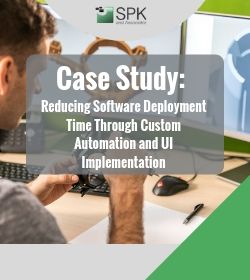I was intrigued by the information and conclusions presented in OnShape’s recent report, “The State of Product Development and Hardware Design 2019.” However, I was not as surprised as they were to hear that the biggest problem in R&D is still complex processes, insufficiently supported or automated by engineering applications and systems:
Finally, given the universal focus on productivity at nearly every successful company, we were surprised by how many engineers, managers and executives say they are still wasting too much time across the entire product development process. Whether it was expressed as reducing mistakes, poor communication, inadequate visibility, too many meetings, time wasted working on the wrong data, getting important information too late, or time spent on IT and other soul-crushing overhead, the single biggest problem in manufacturing companies of all sizes is process complexity and inefficiency.
 Process complexity and inefficiency… As the complexity of the products we develop has increased, the associated engineering processes supporting product development have grown and expanded. Certainly, there is software and technology everywhere that help support and automate these processes, but more often than not, the technology has failed to meet even basic expectations.
Process complexity and inefficiency… As the complexity of the products we develop has increased, the associated engineering processes supporting product development have grown and expanded. Certainly, there is software and technology everywhere that help support and automate these processes, but more often than not, the technology has failed to meet even basic expectations.
This is particularly frustrating when you read about the correlation between innovation and productivity at the beginning of the report. OnShape asked the participants to rate themselves on their innovation abilities, and then on their productivity. They found that:
92% of “excellent” innovation companies rate themselves as “very good” or “excellent” at productivity.
So, if you accept that correlation, the more productive an engineering group is, the more innovative they are (or at least can be). That seems true. You at least have a shot at being creative if you aren’t buried under a pile of administrative work. To get into the zone or flow, you need the time and mental space to do so.
Given the high value placed on innovation and creativity in industry these days, one would think that stripping away inefficient, administrative, overhead work from engineers would be a top priority; that integrating data and automating manual tasks were worth the resources spent; that ensuring that engineering IT systems enabled more efficient product development would be a necessity. Certainly, one would think that engineers — the creative, innovative engine of the company — would not still be spending time on “IT and other soul-crushing overhead.”
How to improve engineering productivity then? Often, the engineering information systems that can accomplish the removal of “soul-crushing overhead,” automate workflows, and appropriately organize and control data are already in place. However, they have not been set up effectively, or integrated properly.
Why not? Because traditional IT folks don’t have a deep understanding of the business of R&D and how engineers need to work. First, it takes years of experience working in R&D organizations and understanding how development takes place, in order to construct application systems that can properly enable efficient collaboration. Second, deep and broad technical expertise in MCAD, EDA, and software engineering applications, along with expert networking and systems skills, are needed. Finally, the people doing this work can’t be the same people responsible for product design and development.
Once the tools are properly set up, then great productivity and efficiency gains can be made by integrating data and automating more manual tasks, which also removes more opportunities for error. It is an ongoing, continual effort for improvement.
It’s not easy, but it is definitely doable.
Next Steps
- Explore our engineering collaboration solutions.
- Subscribe to our blog to stay informed on product development and engineering efficiency topics.
- Schedule a free consultation with a member of SPK and Associates today.







